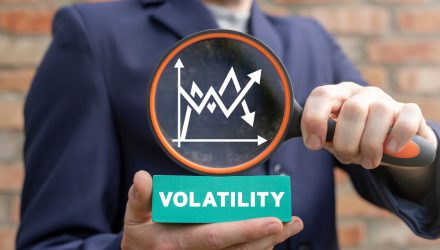2022 gave investors a crash course in volatility, which should make the 2023 stress test a breeze. There won’t be any investor relief from volatility as capital markets continue to digest inflation data.
A decade-long bull market is now giving way to heavy market fluctuations, as evidenced in last year’s inflation-ridden tumult that saw major stock market indexes drop. The U.S. Federal Reserve acknowledges that getting inflation under control will take time, and there’s always a lingering potential that too much monetary policy tightening could give way to reduced economic growth — or worse, a recession.
“We are now in a consolidation period that marks the end of a secular bond bull market that lasted more than 35 years This period will be characterised by reduced market liquidity, capital rationing and persistent volatility in asset prices,” a Financial Times article said, noting that a potential recession could be on the horizon as the Fed continues to try to wrestle with inflation.
“During this kind of consolidation period, market participants have to be thoughtful and nimble about where to invest,” the article added. “A recession could come as early as the middle of the year, but corporate credit fundamentals are strong heading into the downturn.”
Implement a Managed Futures Strategy
There are a number of ways to hedge against volatility in the markets. A common refrain is that investors don’t want to sacrifice gains in order to limit market fluctuations, but there are options to get a nice mix of volatility protection and returns.
To gain that potential upside in the markets while limiting volatility, investors can opt for an exchange traded fund (ETF) that incorporates a managed futures strategy. With its 0.85% expense ratio, consider the iMGP DBi Managed Futures Strategy ETF (DBMF).
For portfolio diversification, DBMF invests in asset classes uncorrelated to traditional equities or bonds. For a dynamic component, the fund is actively managed, allowing for adjustments to the fund’s holdings by seasoned portfolio managers.
DBMF uses long and short positions in the futures market for hedging against wild swings in the market. As mentioned, positions span across a broad range of assets, including domestic equities, fixed income, currencies, and commodities (via its Cayman Islands subsidiary).
The fund’s position within domestically managed futures and forward contracts is determined by the Dynamic Beta Engine, which analyzes the trailing 60-day performance of CTA hedge funds and then determines a portfolio of liquid contracts that would mimic the hedge funds’ averaged performance (not the positions). DBMF takes long positions in derivatives with exposures to asset classes, sectors, or markets that are anticipated to grow in value and takes short positions in derivatives with exposures expected to fall in value.
For more news, information, and analysis, visit the Managed Futures Channel.

